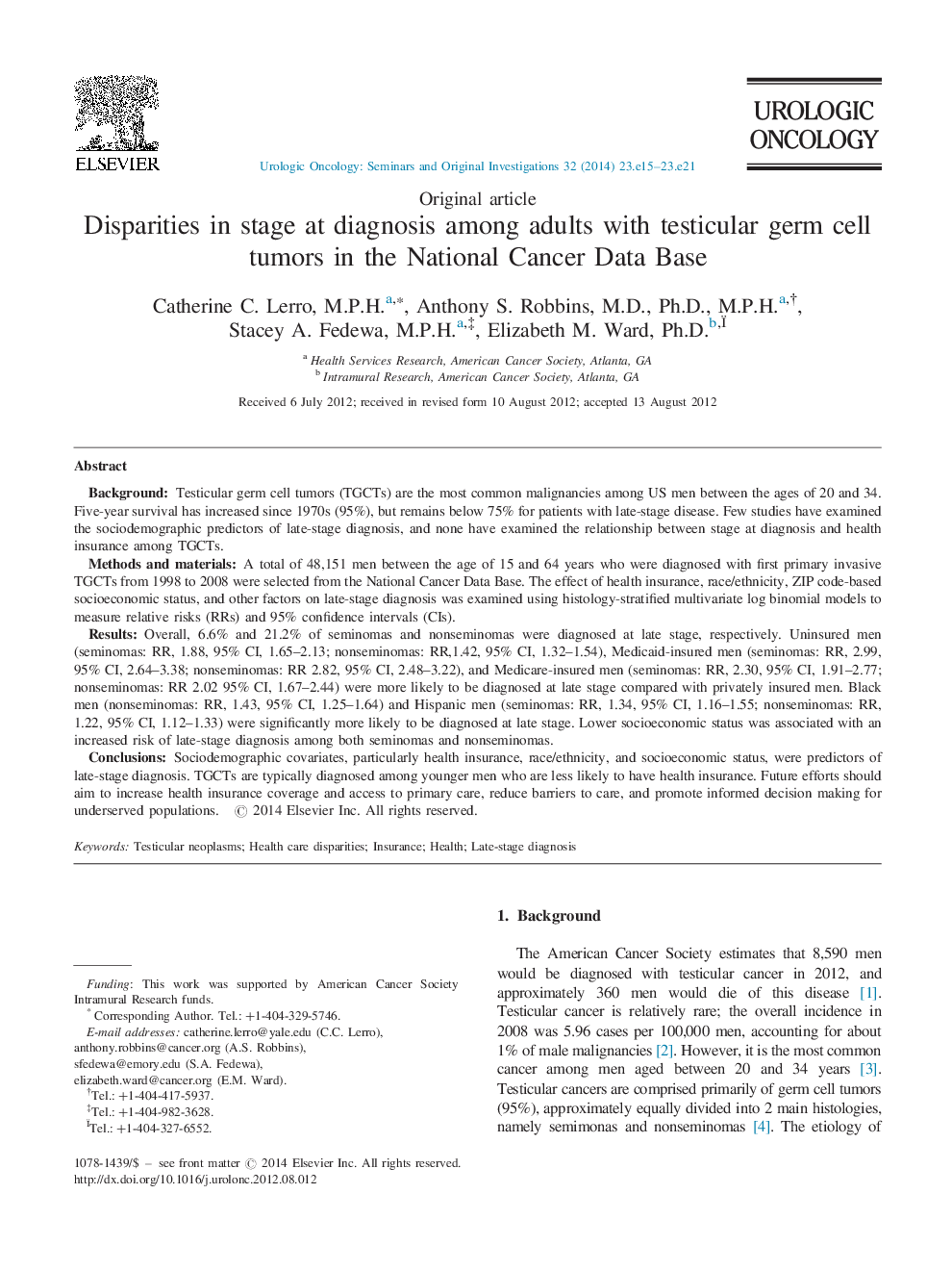| کد مقاله | کد نشریه | سال انتشار | مقاله انگلیسی | نسخه تمام متن |
|---|---|---|---|---|
| 6194369 | 1259362 | 2014 | 7 صفحه PDF | دانلود رایگان |

BackgroundTesticular germ cell tumors (TGCTs) are the most common malignancies among US men between the ages of 20 and 34. Five-year survival has increased since 1970s (95%), but remains below 75% for patients with late-stage disease. Few studies have examined the sociodemographic predictors of late-stage diagnosis, and none have examined the relationship between stage at diagnosis and health insurance among TGCTs.Methods and materialsA total of 48,151 men between the age of 15 and 64 years who were diagnosed with first primary invasive TGCTs from 1998 to 2008 were selected from the National Cancer Data Base. The effect of health insurance, race/ethnicity, ZIP code-based socioeconomic status, and other factors on late-stage diagnosis was examined using histology-stratified multivariate log binomial models to measure relative risks (RRs) and 95% confidence intervals (CIs).ResultsOverall, 6.6% and 21.2% of seminomas and nonseminomas were diagnosed at late stage, respectively. Uninsured men (seminomas: RR, 1.88, 95% CI, 1.65-2.13; nonseminomas: RR,1.42, 95% CI, 1.32-1.54), Medicaid-insured men (seminomas: RR, 2.99, 95% CI, 2.64-3.38; nonseminomas: RR 2.82, 95% CI, 2.48-3.22), and Medicare-insured men (seminomas: RR, 2.30, 95% CI, 1.91-2.77; nonseminomas: RR 2.02 95% CI, 1.67-2.44) were more likely to be diagnosed at late stage compared with privately insured men. Black men (nonseminomas: RR, 1.43, 95% CI, 1.25-1.64) and Hispanic men (seminomas: RR, 1.34, 95% CI, 1.16-1.55; nonseminomas: RR, 1.22, 95% CI, 1.12-1.33) were significantly more likely to be diagnosed at late stage. Lower socioeconomic status was associated with an increased risk of late-stage diagnosis among both seminomas and nonseminomas.ConclusionsSociodemographic covariates, particularly health insurance, race/ethnicity, and socioeconomic status, were predictors of late-stage diagnosis. TGCTs are typically diagnosed among younger men who are less likely to have health insurance. Future efforts should aim to increase health insurance coverage and access to primary care, reduce barriers to care, and promote informed decision making for underserved populations.
Journal: Urologic Oncology: Seminars and Original Investigations - Volume 32, Issue 1, January 2014, Pages 23.e15-23.e21